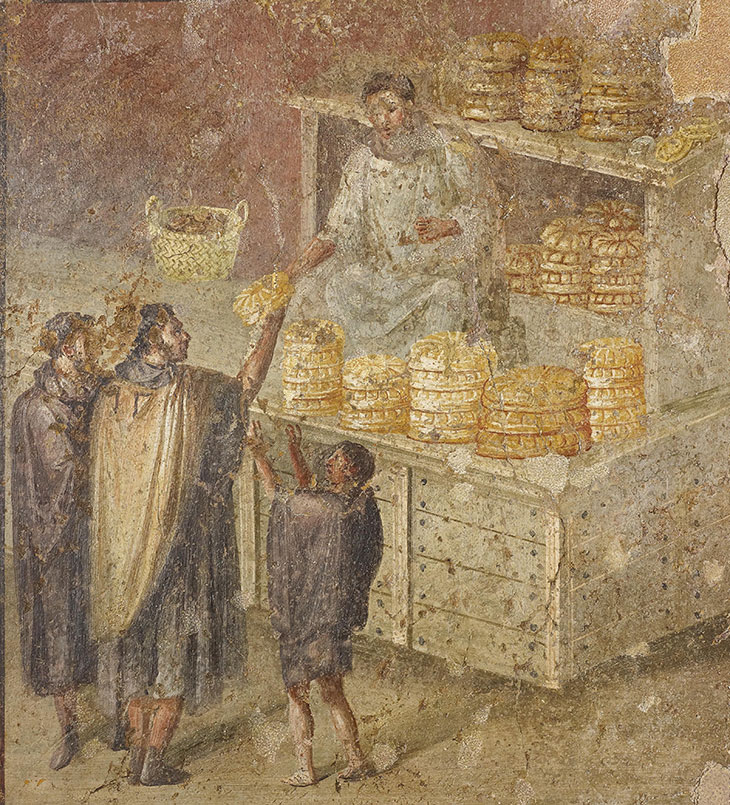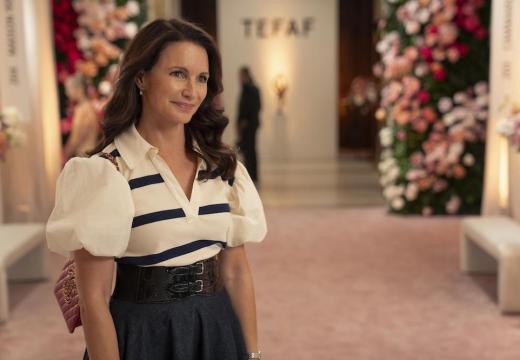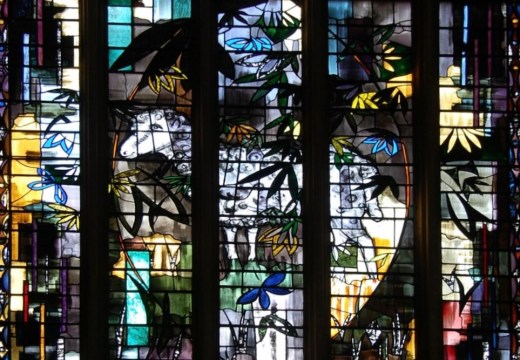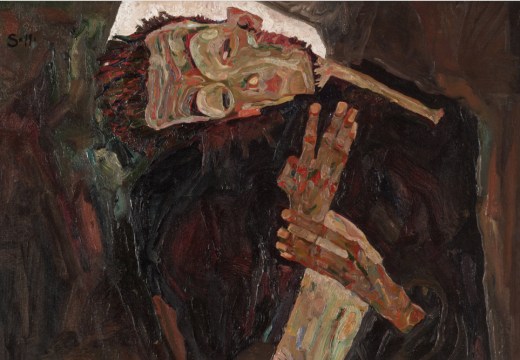Before ash from Mount Vesuvius suspended Pompeii in time, it was a city known for its fertile lands and the export of food and wine to other regions in Italy and beyond. This exhibition considers the evidence from some 300 loaned objects, including kitchen utensils, mosaics and food remains, to explore the ancient Romans’ relationship to dining and agriculture. Find out more from the Ashmolean’s website.
Preview the exhibition below | View Apollo’s Art Diary here

Monochrome mosaic panel of a skeleton holding two wine jugs (1–50 AD), Pompeii. Museo Archaeologico Nazionale di Napoli
Originally the centrepiece of the floor of a formal dining room in the House of the Vestals in Pompeii, this mosaic of a slave skeleton carrying two wine jugs serves as a strange, possibly humorous, memento mori. The ancient Romans often referred to death as a way of reminding themselves to enjoy the moment and its earthly pleasures, otherwise known as carpe diem.

Gilded silver cups decorated with repoussé olive, vine and myrtle sprays (50 BC–150 AD). Ashmolean Museum, University of Oxford
Pompeii was known for its silverware production and silver vessels were also vehicles for ostentatious display. These cups are examples of the repoussé technique, in which the reverse side of the metal sheet is hammered to create the design in low relief. Olive, vine and myrtle were all considered sacred plants.

Bronze fountain spout in the form of a seated fisherman holding a fishing rod (50 BC–50 AD), Pompeii. Museo Archaeologico Nazionale di Napoli
It is estimated that a third of houses in Pompeii had a garden of some kind; these would be used to cultivate food and medicine, eat, worship and socialise. Thanks to the introduction of an aqueduct by Emperor Augustus in the late first century BC, the richest citizens could install ornamental fountains like this bronze fisherman, after which the house where it was excavated (the House of the Small Fountain) is named.

Terracotta votive food: pomegranates (open and closed); grapes; figs; almonds; cheeses; focaccia; honeycomb; mold; long bread (360 BC), Agropoli. Parco Archeologico Di Paestum
This plate containing terracotta models of food comes from a tomb unearthed in Agropoli, a town just outside the originally Greek city of Paestum, which was taken over by an Italic tribe in 400 BC and later the Romans. These Greco-Italic tombs were often decorated with scenes of food-related funerary rituals as well as clay replicas of food that the tomb’s inhabitant might feast on in the afterlife.

Fresco wall panel showing the distribution of bread (40–79 AD), Pompeii. Museo Archaeologico Nazionale di Napoli
Market days and religious festivals attracted local farmers to the busy streets of Pompeii to sell their produce. This fresco shows a man handing out bread, possibly as part of a citywide celebration.










![Masterpiece [Re]discovery 2022. Photo: Ben Fisher Photography, courtesy of Masterpiece London](https://apollo-magazine.com/wp-content/uploads/2022/07/MPL2022_4263.jpg)
‘A revolutionary flame burned bright within him’: David Bindman (1940–2025)